
-
Find the right food for your petTake this quiz to see which food may be the best for your furry friend.Find the right food for your petTake this quiz to see which food may be the best for your furry friend.Featured products
 Perfect Weight Small & Mini Adult Dog Food
Perfect Weight Small & Mini Adult Dog FoodHill's Science Plan Adult Small & Mini Dog Food with Turkey is a complete premium pet food for adult small dogs from 1 year old that are prone to weight gain or slightly overweight. This deliciously smooth mousse is formulated to deliver the appropriate amount of energy to support weight maintenance in adult dogs.
Shop Now Perfect Digestion Large Breed Puppy Food
Perfect Digestion Large Breed Puppy FoodPrecisely balanced nutrition with Hill's ActivBiome+ prebiotic blend actively contributes to supporting digestive health and overall well-being to help your pet feel their best
Shop Now Small & Mini Mature Adult 7+ Dog Food
Small & Mini Mature Adult 7+ Dog FoodHill's Science Plan Small & Mini Breed Mature Adult Dog Food with Chicken is a complete pet food, specially formulated with ActivBiome+ Multi-Benefit Technology.
Tailored nutrition to support graceful ageing in small dogs. Specially made with a synergistic blend of nutrients for energy & vigor.Shop NowFeatured products Hairball & Perfect Coat Adult Cat Food
Hairball & Perfect Coat Adult Cat FoodHill's Science Plan HAIRBALL & PERFECT COAT Adult cat food with Chicken is specially formulated to effectively help avoid hairball formation in adult cats while promoting a beautiful coat. Thanks to its mix of essential Omega-6 fatty acids, this food benefits the cat's skin and fur keeping them healthy and shiny. Our Advanced Fibre Technology helps reduce hairballs by naturally promoting their passage through the gut. This food is formulated with high-quality protein for a perfectly balanced, great-tasting recipe.
Shop Now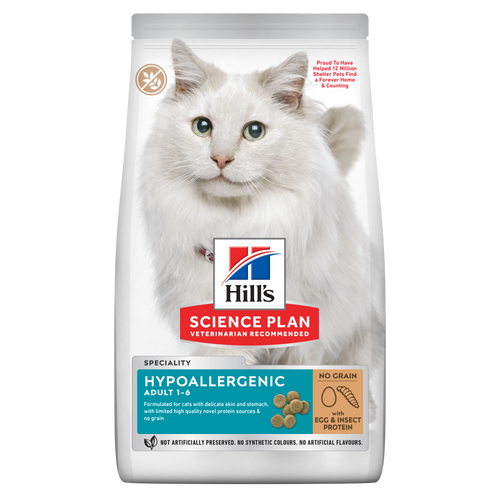 Hypoallergenic Dry Cat Food
Hypoallergenic Dry Cat FoodHILL'S SCIENCE PLAN Hypoallergenic Adult cat food with egg & insect protein is a complete pet food for adult cat 1–6 years old. It's formulated for cats with delicate skin and stomach, with limited high quality novel protein sources & no grain.
Shop Now Kitten Food
Kitten FoodTender chicken chunks in gravy for kittens, with omega-3s for healthy eye & brain development and high-quality protein to support muscle growth. With balanced minerals to promote strong bones & teeth.
Shop Now -
Dog
- Dog Tips & Articles
-
Health Category
- Weight
- Food & Environmental Sensitivities
- Urinary
- Digestive
- Joint
- Kidney
-
Life Stage
- Puppy Nutrition
- Adult Nutrition
- Senior Nutrition
Cat- Cat Tips & Articles
-
Health Category
- Weight
- Skin & Food Sensitivities
- Urinary
- Digestive
- Kidney
-
Life Stage
- Kitten Nutrition
- Adult Nutrition
Featured articles Pet Food Storage Tips
Pet Food Storage TipsWhere you store your cat and dog food can make a big difference in the quality and freshness once it is opened. Here are some common questions and recommendations for optimal storage for all of Hill’s dry and canned cat and dog food.
Read More Understanding Your Pet's Microbiome
Understanding Your Pet's MicrobiomeLearn what a pet's microbiome is, how it contributes to your pet's gut & overall health, and why nutrition is important in maintaining healthy microbiomes.
Read More The Right Diet For Your Pet
The Right Diet For Your PetLearn what to look for in healthy pet food & nutrition, including ingredients, quality of the manufacturer, your pet's age, and any special needs they have
Read More -


The best way to care for your cat’s health and wellbeing is to understand how their body functions and what to look out for when they’re sick. Here's what you need to know about lymphoma in cats so you can be the most informed pet parent you can be.
Lymphoma in Cats
Lymphoma in cats is a cancer of the lymphatic system, which is a collection of lymphocytes (blood cells) and organs (lymph nodes, etc.). It can affect many systems in a cat's body, and is the most common cause of spinal cord tumours.
According to The Royal Veterinary College, feline lymphoma is the most commonly diagnosed cancer in cats. There are many types of lymphoma in cats, but the most common is intestinal lymphoma, also known as gastrointestinal (GI) or alimentary lymphoma. A variety of factors will determine how this cancer might affect your cat.

Causes
The onset of feline lymphoma has been linked to the feline leukaemia virus (FeLV), and, to a lesser extent, feline immunodeficiency virus (FIV). Cats who are positive for feline leukaemia generally develop cancer at a younger age. These days, because many cats are housed indoors and there's widespread testing for and vaccination against FeLV, lymphoma is less common in younger cats. Cats who are negative for the virus tend to develop lymphoma at an older age.
Blue Cross says that exposure to tobacco smoke may increase the risk of lymphoma in cats. They explain that, while secondhand smoke may be harmful to all pets, cats are especially vulnerable. Not only do they breathe in smoke from the air, but while self-grooming, they may also ingest toxic particles from smoke that has settled on their fur.
Types of Lymphoma in Cats
Because the lymphatic system interacts with every system in the body, lymphoma can affect any of these organs. The main types of lymphoma include:
- Alimentary (digestive tract)
- Mediastinal (chest)
- Renal (kidneys)
- Nasal (nose)
- Spinal (spine)
- Cutaneous (skin)
- Multicentric (meaning multiple organs are affected, most often the spleen and liver)
Signs of Lymphoma in Cats
Signs of lymphoma in cats depend on which organs are affected. Here are some of the signs to look out for according to where the lymphoma is located:
- Digestive tract: Vomiting, diarrhoea, constipation, loss of appetite, weight loss, lethargy and bloody stool.
- Chest: Open-mouth breathing, coughing, loss of appetite, weight loss and regurgitation.
- Kidneys: Increased drinking and urinating, weight loss and loss of appetite.
- Nose: Chronic nasal discharge, bloody nose, swollen nose, sneezing, loss of appetite, eye discharge and noisy breathing.
- Spine: Weakness or paralysis of the back legs.
- Skin: Itching, hair loss and bleeding skin tumours.
If you notice any of these signs in your cat, immediately contact your veterinarian. They can diagnose your cat's condition and determine the best treatment.
Diagnosis
Lymphoma is diagnosed using a combination of information. If your vet suspects your cat has lymphoma, they'll ask you about your cat's history and lifestyle. They'll likely follow up with a physical examination of your cat, laboratory testing (including blood tests, urinalysis, and testing for FeLV and FIV) and imaging studies, such as radiographs and ultrasounds.


Tasty Tips
The testing your vet recommends will vary depending on the type of lymphoma they suspect. If there's a mass or swollen lymph node, for example, they may also take a biopsy. This involved taking a small sample of the affected tissue and examining it for cancerous cells.
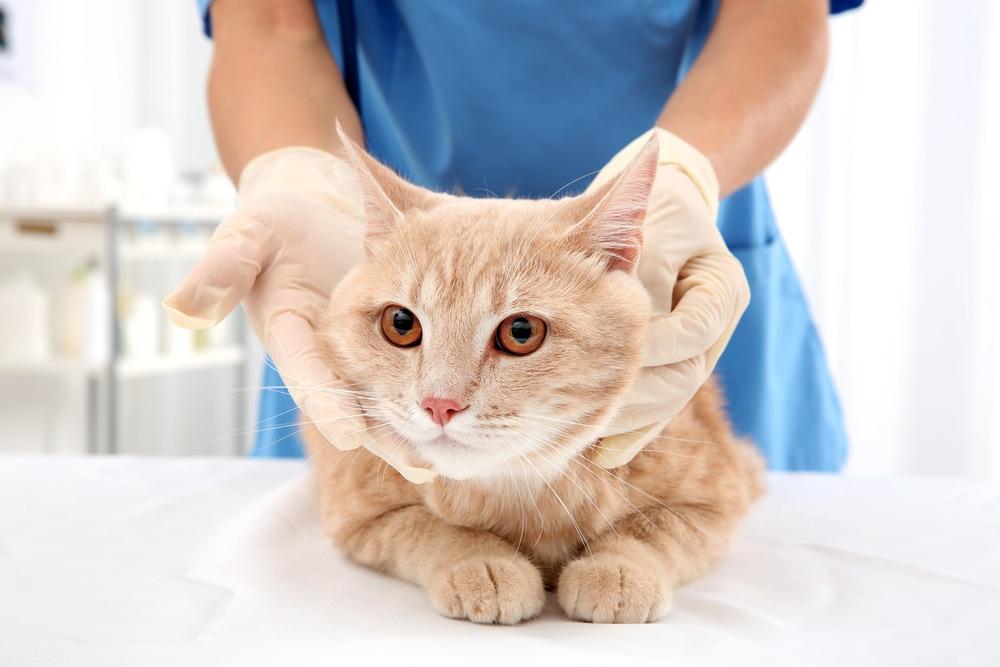
Treatment
Feline lymphoma treatment is aimed at putting the cancer into remission (eliminating all signs and symptoms) and maximising your cat’s quality of life for as long as possible. Because lymphoma is usually widespread in the body, explains Blue Cross, chemotherapy tends to be the preferred option rather than surgery. Cats tend to respond well to this treatment and don’t experience the unpleasant side effects humans do, such as hair loss or nausea.
If chemotherapy isn't an option, your vet may recommend radiation and, in rare cases, surgery. Cats may also receive treatments such as prednisone (a steroid) to relieve the symptoms of cancer.
Prognosis
With chemotherapy, many cats can achieve temporary remission of clinical signs and maintain a good quality of life. Some cats can achieve cancer remission for up to several years, depending on their individual situation. However, prognosis will vary depending on the type of lymphoma, whether your cat is positive for FeLV and/or FIV, and where the cancer is located. Cats who are FeLV- or FIV-positive often have a worse prognosis.
Pet parents should also consult their vet about nutritional requirements for cats with lymphoma.
Prevention
While there's no way to prevent lymphoma, you can take actions to lessen your cat's chances of developing it.
Keep your cat indoors
This will prevent them from having contact with cats who are FeLV- or FIV-positive.
Test for FIV and FeLV
Have your cat tested when they're a kitten if possible. If you're adding a new cat to your household, have them tested before exposing your cat to them.
Vaccinate kittens against FeLV
There is currently no FIV vaccine, but you can have your cat vaccinated for FeLV. If your cat goes outdoors, be sure to keep their FeLV vaccine up to date.
Keep your cat's environment smoke-free
Secondhand smoke is not good for anyone, and according to the Blue Cross, that includes cats.
Visit your vet regularly
Early detection is key. Get your cat examined twice a year and request annual blood tests for cats 7 years and older.
Advances in medicine and better education for pet parents continue to improve the odds for cats with cancer. From early detection to reducing risk factors, you can take steps to help your cat live their best life.


Dr. Sarah Wooten graduated from UC Davis School of Veterinary Medicine in 2002. A member of the American Society of Veterinary Journalists, Dr. Wooten divides her professional time between small animal practice in Greeley, Colorado, public speaking on associate issues, leadership, and client communication, and writing. She enjoys camping with her family, skiing, SCUBA, and participating in triathlons.
Related products

HILL'S SCIENCE PLAN Hypoallergenic Adult cat food with egg & insect protein is a complete pet food for adult cat 1–6 years old. It's formulated for cats with delicate skin and stomach, with limited high quality novel protein sources & no grain.

Hill's Science Plan HAIRBALL & PERFECT COAT Adult cat food with Chicken is specially formulated to effectively help avoid hairball formation in adult cats while promoting a beautiful coat. Thanks to its mix of essential Omega-6 fatty acids, this food benefits the cat's skin and fur keeping them healthy and shiny. Our Advanced Fibre Technology helps reduce hairballs by naturally promoting their passage through the gut. This food is formulated with high-quality protein for a perfectly balanced, great-tasting recipe.

Tender chicken chunks in gravy for kittens, with omega-3s for healthy eye & brain development and high-quality protein to support muscle growth. With balanced minerals to promote strong bones & teeth.
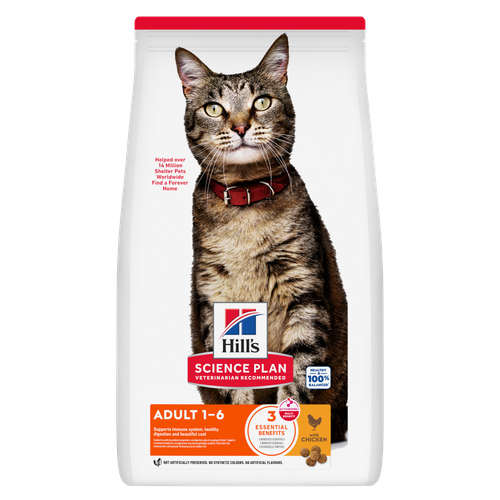
Hill's Science Plan Adult Cat Food with Chicken is a complete pet food, specially formulated with ActivBiome+ Multi-Benefit Technology.
This food is specially formulated to fuel the energy needs of cats during the prime of their life.
Related articles

Discover which cat toys games your feline friend might like, and how they are great sources of exercise. Explore our library of articles to learn more.
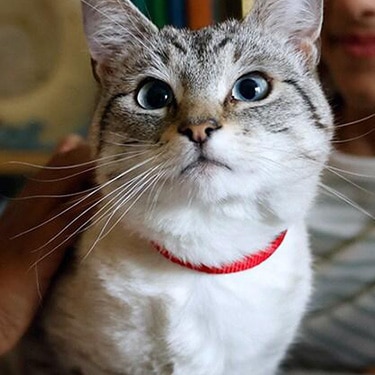
Discover what you can do to spot and support a sensitive cat stomach. See what routines and food you can implement to help your cat be happy and healthy.

When learning how to train your cat, you'll start with very basic first steps that both reward good behavior and discourage the bad.
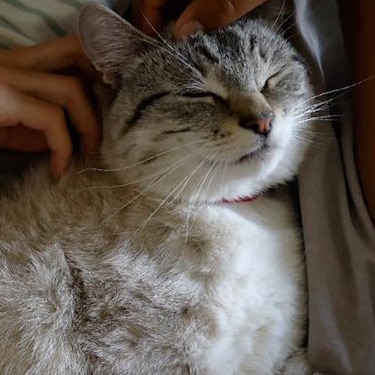
Find out about how you can support your cat's digestion to boost overall health. Diet is key to a long and happy life for your cat, so discover what you can do.

Put your cat on a diet without them knowing
Our low calorie formula helps you control your cat's weight. It's packed with high-quality protein for building lean muscles, and made with purposeful ingredients for a flavorful, nutritious meal. Clinically proven antioxidants, Vitamin C+E, help promote a healthy immune system.
Put your cat on a diet without them knowing
Our low calorie formula helps you control your cat's weight. It's packed with high-quality protein for building lean muscles, and made with purposeful ingredients for a flavorful, nutritious meal. Clinically proven antioxidants, Vitamin C+E, help promote a healthy immune system.

